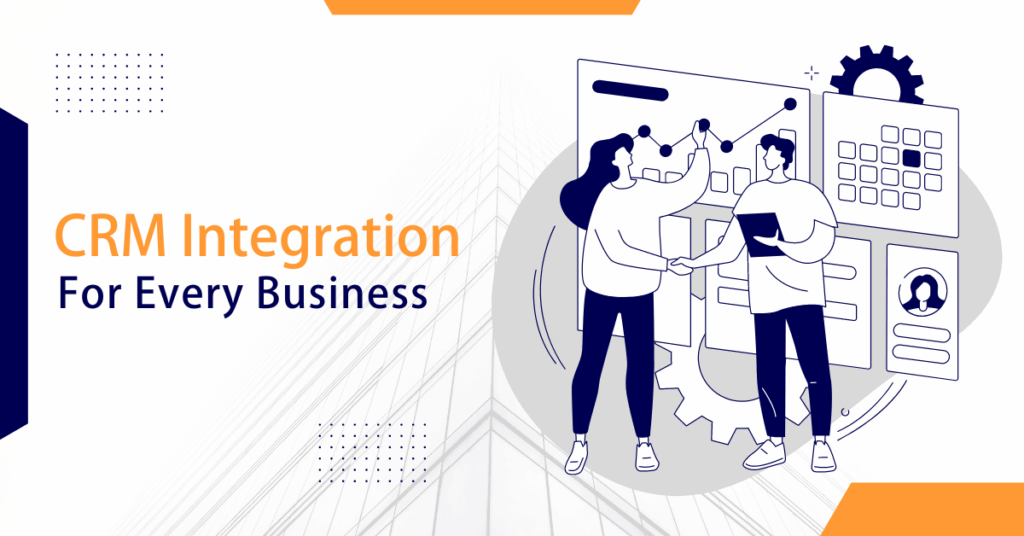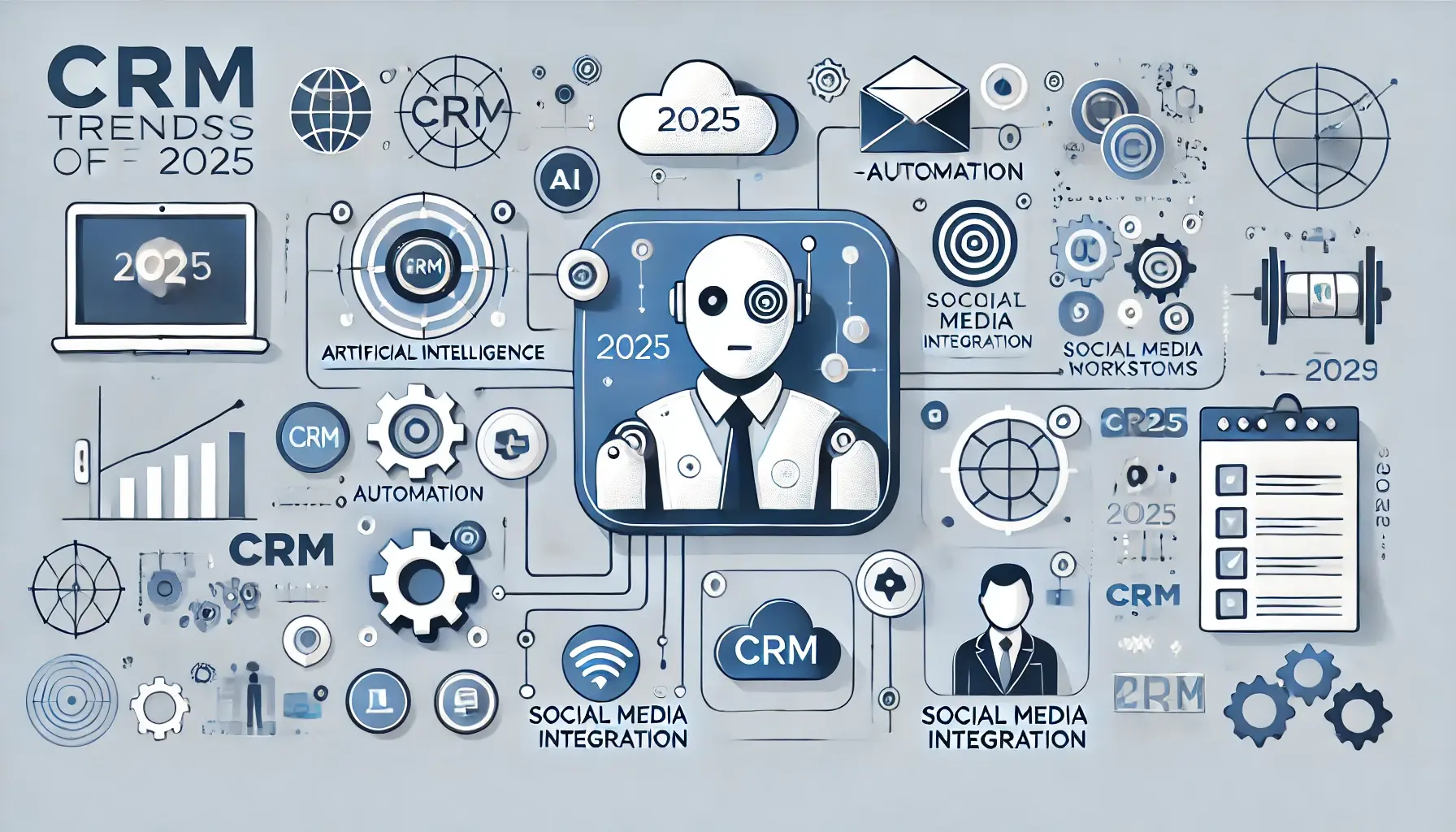
Supercharge Your Workflow: A Deep Dive into CRM Integration with Clarizen
In today’s fast-paced business environment, efficiency and collaboration are paramount. Companies are constantly seeking ways to streamline their operations and improve their bottom line. One of the most effective strategies is to integrate your Customer Relationship Management (CRM) system with your project management platform. This article will explore the powerful synergy that arises when you integrate your CRM with Clarizen, a leading project management solution. We’ll delve into the benefits, the how-to, and the best practices for a seamless integration that can transform your business.
The Power of Integration: Why CRM and Clarizen Need Each Other
Imagine a world where your sales team and project teams are always on the same page. Where leads seamlessly transition into projects, and project updates automatically reflect in your CRM. This is the reality that CRM and Clarizen integration brings. It’s about breaking down silos and fostering a unified view of your customer journey.
Before we dive into the specifics, let’s understand why this integration is so crucial. CRM systems, like Salesforce, HubSpot, or Microsoft Dynamics 365, are designed to manage customer interactions, track leads, and nurture relationships. Clarizen, on the other hand, excels at project planning, execution, and resource management. When you combine the strengths of both, you create a powerful engine for business growth.
Here’s a breakdown of the key benefits:
- Improved Data Accuracy: Eliminate manual data entry and reduce the risk of errors. When data flows automatically between systems, you can trust the information you’re working with.
- Enhanced Collaboration: Foster seamless communication between sales, marketing, and project teams. Everyone has access to the same information, leading to better decision-making.
- Increased Efficiency: Automate tasks and workflows, freeing up your teams to focus on more strategic initiatives.
- Better Customer Experience: Provide a more consistent and personalized experience for your customers. Project teams have access to customer details, and sales teams can track project progress.
- Data-Driven Insights: Gain a 360-degree view of your customer journey, allowing you to make informed decisions and optimize your strategies.
Understanding Clarizen: A Project Management Powerhouse
Clarizen is a robust project management platform designed to handle complex projects and workflows. It offers a wide range of features, including:
- Project Planning: Create detailed project plans, define tasks, set dependencies, and allocate resources.
- Task Management: Assign tasks, track progress, and manage deadlines.
- Resource Management: Optimize resource allocation and ensure that your team is working efficiently.
- Collaboration: Facilitate communication and collaboration among team members.
- Reporting and Analytics: Generate reports and gain insights into project performance.
Clarizen’s flexibility and scalability make it a great choice for businesses of all sizes. Its intuitive interface and powerful features empower teams to manage projects effectively and achieve their goals.
Choosing the Right CRM for Clarizen Integration
Before you can integrate Clarizen with your CRM, you need to choose the right CRM system. The best choice depends on your specific needs and requirements. Some of the most popular CRM systems that integrate well with Clarizen include:
- Salesforce: A leading CRM platform with a wide range of features and integrations.
- HubSpot: A popular CRM platform known for its ease of use and marketing automation capabilities.
- Microsoft Dynamics 365: A comprehensive CRM platform that integrates seamlessly with other Microsoft products.
- Zoho CRM: A cost-effective CRM platform with a wide range of features.
- SugarCRM: An open-source CRM platform with a high degree of customization.
When choosing a CRM, consider the following factors:
- Features: Does the CRM offer the features you need to manage your customer relationships effectively?
- Integrations: Does the CRM integrate with Clarizen and other systems you use?
- Scalability: Can the CRM scale to meet your future needs?
- Cost: What is the cost of the CRM, and does it fit within your budget?
- Ease of Use: Is the CRM easy to use and understand?
Once you’ve selected your CRM, you can move on to the integration process.
Methods of CRM and Clarizen Integration
There are several ways to integrate your CRM with Clarizen. The best method depends on your technical expertise, budget, and specific integration requirements.
- Native Integration: Some CRM systems offer native integrations with Clarizen. This is often the easiest and most seamless method, as it requires minimal setup and configuration. Check the marketplace of both your CRM and Clarizen to see if a native integration is available.
- Third-Party Integration Platforms: Platforms like Zapier, Workato, and Tray.io provide pre-built connectors and workflows that allow you to integrate your CRM with Clarizen without coding. These platforms offer a user-friendly interface and a wide range of customization options.
- Custom Integration: If you have specific integration requirements that are not met by native integrations or third-party platforms, you can develop a custom integration using APIs. This method requires technical expertise and can be more time-consuming and expensive, but it offers the most flexibility.
Step-by-Step Guide to Integrating CRM with Clarizen (Using a Third-Party Platform)
Let’s walk through a general example of how to integrate your CRM with Clarizen using a third-party integration platform like Zapier. Keep in mind that the specific steps may vary depending on the platform you choose and the CRM you’re using.
- Choose Your Integration Platform: Select a platform that supports both your CRM and Clarizen.
- Create an Account: Sign up for an account on the integration platform.
- Connect Your Accounts: Connect your CRM and Clarizen accounts to the platform. You’ll typically need to provide your login credentials and grant the platform access to your data.
- Choose a Trigger: A trigger is an event that starts the integration. For example, a new lead created in your CRM could be a trigger.
- Choose an Action: An action is what happens when the trigger event occurs. For example, creating a new project in Clarizen when a new lead is created in your CRM.
- Configure the Integration: Map the data fields between your CRM and Clarizen. For example, you might map the lead’s name, email address, and company name to the corresponding fields in Clarizen.
- Test the Integration: Test the integration to make sure it’s working correctly. Create a test lead in your CRM and verify that a new project is created in Clarizen.
- Activate the Integration: Once you’re satisfied with the results, activate the integration.
This is a simplified overview. Each integration platform has its own specific instructions and features. Consult the platform’s documentation for detailed guidance.
Best Practices for CRM and Clarizen Integration
To ensure a successful and effective integration, follow these best practices:
- Plan Your Integration: Before you start, take the time to plan your integration. Define your goals, identify the data you need to share, and map the data fields between your systems.
- Start Small: Don’t try to integrate everything at once. Start with a small set of data and workflows and gradually expand the integration as needed.
- Test Thoroughly: Test your integration thoroughly before you deploy it to production. Make sure that data is flowing correctly and that your workflows are working as expected.
- Monitor Your Integration: Monitor your integration regularly to ensure that it’s working properly. Check for errors and make sure that data is being synced correctly.
- Document Your Integration: Document your integration, including the steps you took to set it up, the data fields you mapped, and any custom code you wrote. This will make it easier to troubleshoot problems and maintain your integration over time.
- Train Your Team: Train your team on how to use the integrated systems. Make sure that they understand how data is shared between the systems and how to use the new workflows.
- Keep Your Systems Updated: Regularly update your CRM and Clarizen systems to ensure that you have the latest features and security patches.
Real-World Examples of CRM and Clarizen Integration in Action
Let’s look at some examples of how companies are using CRM and Clarizen integration to improve their operations:
- Sales Team: When a sales rep closes a deal in Salesforce, a new project is automatically created in Clarizen for the project team to begin onboarding the new customer. This eliminates manual data entry and ensures that the project team has all the necessary information from the start.
- Marketing Team: When a lead converts to a customer in HubSpot, the marketing team can automatically trigger a project in Clarizen to launch a customer onboarding campaign. This ensures that the customer receives a consistent and personalized experience.
- Project Management Team: Project managers can view customer details and sales history directly within Clarizen, providing context for project tasks and decisions. This reduces the need to switch between systems and improves collaboration.
- Professional Services: When a new service agreement is signed in the CRM, a project is automatically created in Clarizen for the professional services team to deliver the service. This streamlines the service delivery process and ensures that projects are initiated promptly.
Troubleshooting Common Integration Issues
Even with careful planning, you may encounter some challenges during the integration process. Here are some common issues and how to address them:
- Data Mapping Errors: Ensure that you have correctly mapped the data fields between your CRM and Clarizen. Double-check the field names and data types to make sure they match.
- Synchronization Delays: If you’re experiencing delays in data synchronization, check the platform’s documentation for information on sync frequency and troubleshooting tips.
- Permissions Issues: Make sure that the integration platform has the necessary permissions to access your CRM and Clarizen data.
- Error Logs: Review the error logs in your integration platform to identify the root cause of any problems.
- API Limits: Be aware of the API limits of your CRM and Clarizen systems. If you’re exceeding the limits, you may need to adjust your integration configuration.
- Contact Support: If you’re unable to resolve an issue on your own, contact the support teams for your CRM, Clarizen, and integration platform.
The Future of CRM and Clarizen Integration
The integration of CRM and project management platforms is constantly evolving. As technology advances, we can expect to see even more sophisticated integrations that offer greater automation, insights, and efficiency.
Here are some potential future trends:
- AI-Powered Integrations: Artificial intelligence (AI) and machine learning (ML) will play an increasingly important role in CRM and Clarizen integration. AI can be used to automate tasks, predict customer behavior, and provide insights into project performance.
- Enhanced Automation: We can expect to see even more advanced automation capabilities, such as the ability to automatically create projects based on specific criteria, update project tasks based on CRM data, and generate reports that combine data from both systems.
- Improved User Experience: Integration platforms will continue to improve their user interfaces, making it easier for users to set up and manage integrations.
- Deeper Integrations: We’ll see deeper integrations that go beyond basic data synchronization. For example, you might be able to use Clarizen data to personalize customer interactions in your CRM, or you might be able to use CRM data to optimize project resource allocation in Clarizen.
- Integration with other tools: As businesses use more and more software, the integration of CRM with Clarizen will also expand to connect with other business tools. This will allow for a more holistic view of business operations.
Conclusion: Unlock the Potential of Your Business
Integrating your CRM with Clarizen is a strategic move that can transform your business. By streamlining your workflows, improving collaboration, and gaining deeper insights into your customer journey, you can achieve greater efficiency, productivity, and customer satisfaction.
Whether you choose a native integration, a third-party platform, or a custom solution, the key is to plan carefully, test thoroughly, and monitor your integration regularly. By embracing the power of integration, you can unlock the full potential of your business and achieve your goals.
Don’t delay! Start exploring the possibilities of CRM and Clarizen integration today and experience the benefits firsthand.


